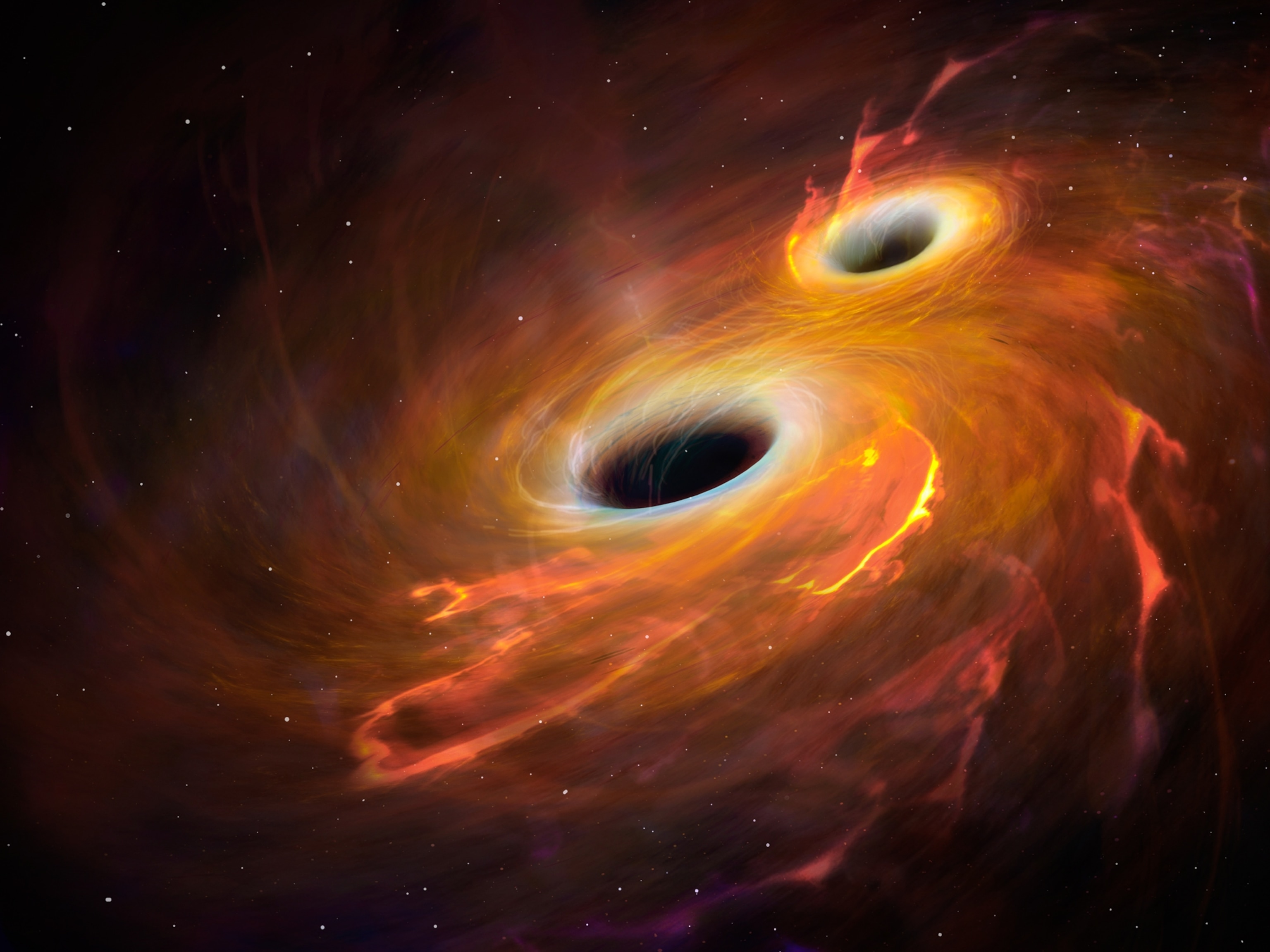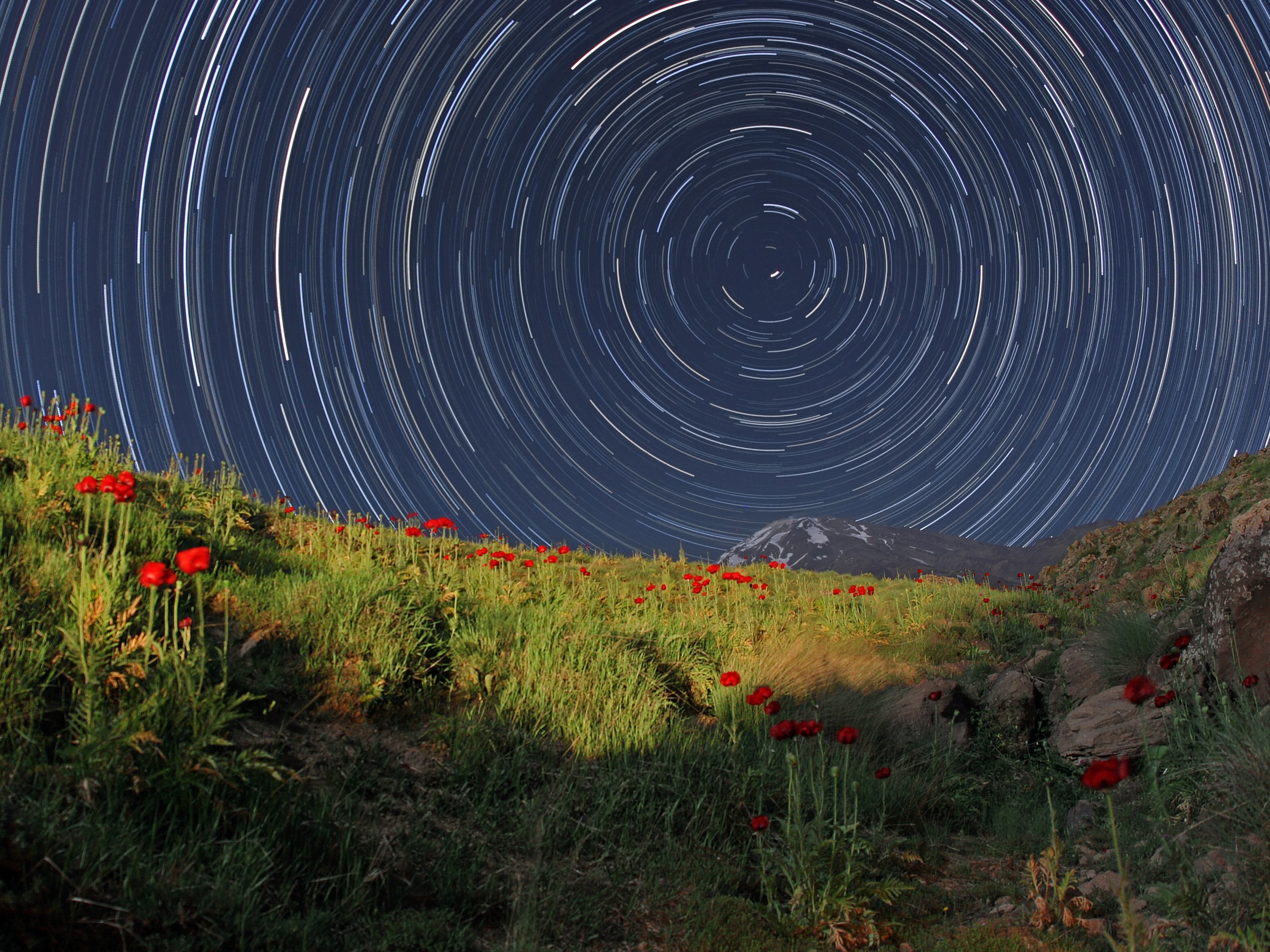
Einstein's Gravity Confirmed on a Cosmic Scale
Proof of dark matter and dark energy, study says
The theory of gravity proposed by Albert Einstein nearly a century ago can explain the dance of galaxies around one another just as well as it can model the motion of planets around the sun, according to a new study.
The finding suggests that the invisible substance called dark matter and the even more mysterious force known as dark energy are not just figments of physicists' imaginations.
For centuries Isaac Newton's law of universal gravitation worked well enough to explain gravity on Earth. But astronomers eventually saw discrepancies in the way larger objects such as planets interacted.
Einstein's general theory of relativity, published in 1916, proposed that gravity works on large scales because matter warps the fabric of space and time, also known as space-time. (See "Einstein and Beyond" in National Geographic magazine.)
This notion has been used to successfully explain phenomena in our solar system, such as the slight alterations in Mercury's orbit around the sun, which Newton's gravity couldn't account for.
The existence of dark matter and dark energy is based on the assumption that Einstein's gravity is affecting galaxies billions of light-years from Earth in the same way that it affects objects in our solar system.
Based on general relativity, for example, scientists think dark matter exists because some cosmic objects behave as if they have more mass than we can see.
But until now, tests of general relativity on galactic scales have been inconclusive.
Einstein's Gravity and Galaxy Clusters
For the new study, appearing this week in the journal Nature, astrophysicist Reinabelle Reyes and colleagues looked at data gathered from more than 70,000 bright, elliptical galaxies.
The team found that the galaxies, located up to 3.5 billion light-years from Earth, are clustered together in precisely the way that general relativity predicts.
"From the galaxies' positions, we can tell how clustered they are. That gives us information about how gravity acts, because that's what gravity does—it pulls things together," said Reyes, of Princeton University in New Jersey.
By combining measurements of the galaxies' clustering with other properties—such as the galaxies' movements relative to one another and the way they bend each other's light—Reyes's team calculated EG, a quantity physicists use when looking at objects' expected interactions.
General relativity predicts that EG should be around 0.4. The value of EG measured in the study was 0.39.
Still Greater Distances to Probe
The new findings validate the current popular model of cosmology, said David Spergel, a theoretical astrophysicist also at Princeton.
"It looks like things are okay," Spergel said. "It would have been more exciting if they saw deviations [from general relativity], but their results are important as well."
The study authors also note that their work casts serious doubt on some alternative theories of gravity, such as tensor-vector-scalar gravity, or TeVeS, which attempts to explain how gravity might work differently on large cosmic scales.
TeVeS predicts that EG should be around 0.22—much lower than the observed value.
It's still possible, however, that TeVeS takes over at even larger distances not yet explored.
"There's always a possibility that things are breaking down where you haven't probed yet," Spergel said.
Future space missions, such as NASA's Joint Dark Energy Mission and the European Space Agency's Euclid mission, will be required to test general relativity across these larger distances, the scientists say.





